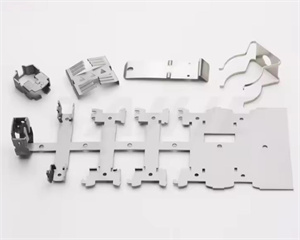There are significant differences between progressive molds and regular stamping in multiple aspects:
Production efficiency:
Progressive mold: By setting up multiple workstations in a set of molds, continuous stamping can be achieved, completing multiple processes at once, with extremely high production efficiency, suitable for large-scale mass production.
Regular stamping: Usually, only one process can be completed per stamping, resulting in relatively low production efficiency.
Process Integration:
Progressive mold: Integrating multiple processes such as punching, bending, stretching, etc. into one mold, and materials are processed sequentially through various workstations in the mold.
Ordinary stamping: Each process may require a separate mold, and the processes are relatively independent.
Accuracy and consistency:
Progressive mold: Due to continuous processing at multiple workstations, the positioning accuracy between each process is high, and the consistency of the product is good.
Ordinary stamping: If there are many processes and they are carried out separately, the accumulated error may be large, and the product consistency is relatively poor.
Mold complexity:
Progressive molds: have complex structures, difficult design and manufacturing, and high costs.
Ordinary stamping: The mold structure is relatively simple and the cost is low.
Material utilization rate:
Progressive mold: Through reasonable layout design, material utilization can be effectively improved.
Ordinary stamping: In terms of material layout, it may not be as optimized as progressive molds, and the material utilization rate may be slightly lower.
In the production of electronic components, progressive molds are commonly used to manufacture small, high-precision connectors; Ordinary stamping may be more suitable for the production of large and simple parts that do not require high precision and process integration. Progressive molds are suitable for high-precision, large-scale, and complex production processes, while ordinary stamping is more suitable for simple, small-scale, or production needs with strict cost requirements.
There are significant differences between progressive die stamping and normal die stamping in several ways.
First of all, from the perspective of working principle and process, progressive die stamping is to complete multiple stamping processes at the same time on a raw material through different stations on a mold. This means that with each stroke completed, the material moves a fixed distance until the final product is finished. Ordinary die stamping, on the other hand, focuses more on the operation of a single process and may not involve the continuous operation of multiple stations and processes.
Secondly, from the perspective of production efficiency and degree of automation, continuous molds have significant advantages. Since it completes multiple processes in a single stroke, it is highly productive and suitable for large-scale production. At the same time, the progressive die stamping production line can usually be automated, reducing labor costs, improving production efficiency, and reducing the risk of industrial accidents caused by improper manual operation.
However, it is important to note that despite the many advantages of continuous molding, it is also relatively difficult to design and manufacture, and can be costly. In addition, due to the need to ensure the stability of the feeding of the progressive die stamping , a part of the material may be wasted, resulting in low material utilization.
In general, there are obvious differences between progressive die stamping and ordinary die stamping in terms of working principle, production efficiency, degree of automation and cost. When choosing which die to use for stamping, it is necessary to comprehensively consider factors such as product characteristics, production needs, technical level and cost budget.
